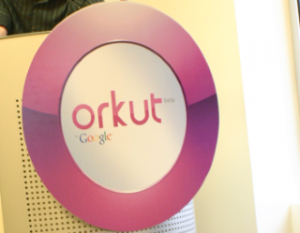 It had to come, and it’s here. All that work Google has been doing to track people’s online behaviors has come to fruition.
It had to come, and it’s here. All that work Google has been doing to track people’s online behaviors has come to fruition.
First, the Internet Advertising Bureau (IAB) released its online behavioral advertising guidelines earlier this month, and Google was one of the companies to agree to abide by them. There are three primary rules that companies who agree to abide by the IAB guidelines must follow:
- Notice must be given to consumers that they are being tracked.
- Consent is assumed unless a consumer takes action and opts-out of receiving behavioral ads. That means companies only need to provide an opt-out mechanism and seek consumer consent “where applicable” (whatever that means).
- Educating consumers about how their personal and private information is collected and how it can be used as well as how they can opt-out of behavioral advertising is required.
Then on March 11th, Google announced the launch of the Google behavioral advertising program on YouTube (although ads won’t start displaying until April). It has not been a secret that Google has been working on this program for a long time, and finally, they can talk about it openly, thanks to the new IAB guidelines. As you can imagine, privacy advocates are not happy about behavioral advertising, and many are pointing fingers at Google as an industry leader who should set the standard for ethical business by using an opt-in system rather than an opt-out system for behavioral advertising. Google disagrees.
What do you think about companies tracking your online habits and serving ads based on them? Behavioral advertising has been around for awhile and an article in BBC News states that a Forrester Research report cited 26% of European companies used behavioral advertising in 2008. It’s a great opportunity for brands to connect with their target audiences.
All I know is I’m glad Google didn’t start serving behavior-based ads when I was doing research for my book coming out later this year about the Playboy brand. Both me and the advertiser paying for the ads would not have been happy.
Image: Flickr
Susan Gunelius is the author of 10 marketing, social media, branding, copywriting, and technology books, and she is President & CEO of KeySplash Creative, Inc., a marketing communications company. She also owns Women on Business, an award-wining blog for business women. She is a featured columnist for Entrepreneur.com and Forbes.com, and her marketing-related articles have appeared on websites such as MSNBC.com, BusinessWeek.com, TodayShow.com, and more.
She has over 20 years of experience in the marketing field having spent the first decade of her career directing marketing programs for some of the largest companies in the world, including divisions of AT&T and HSBC. Today, her clients include large and small companies around the world and household brands like Citigroup, Cox Communications, Intuit, and more. Susan is frequently interviewed about marketing and branding by television, radio, print, and online media organizations, and she speaks about these topics at events around the world. You can connect with her on Twitter, Facebook, LinkedIn, or Google+.



In my opinion this is the same as what they do now, I don’t see it as different from using my search question to pull up paid search ads. If anything this just means that I wont have to deal with irrelevant ads. The opt-out system is also more logical than an opt-in system, because only people concerned about privacy are willing to take the time to opt-out whereas people who are not concerned about privacy wouldn’t take the time to opt-in because, well, people are lazy when they don’t care about something. Overall, it is just a more efficient way to provide the same service.